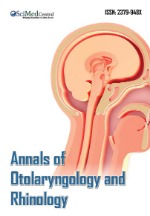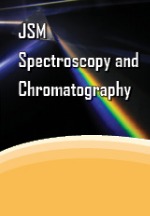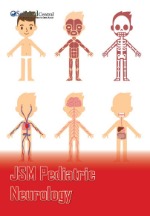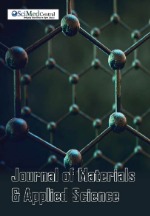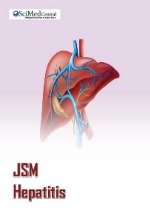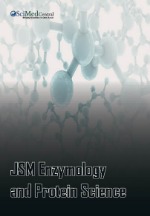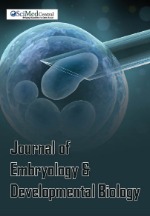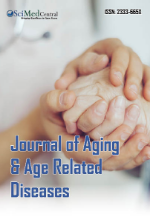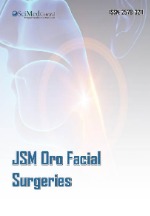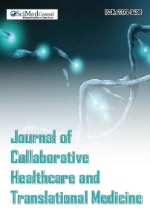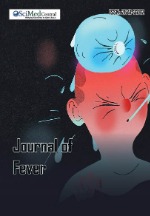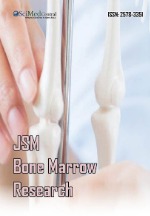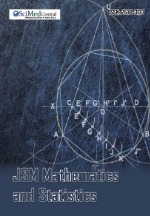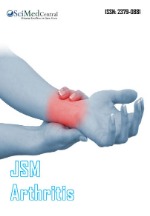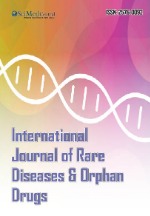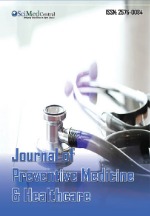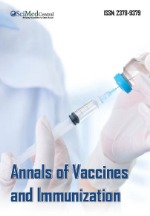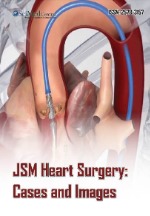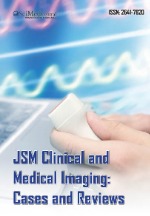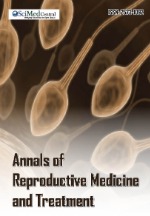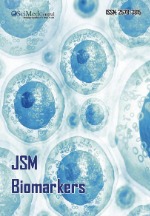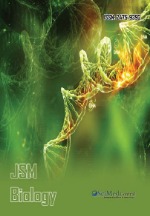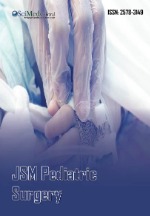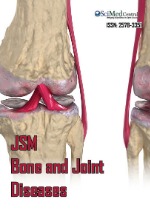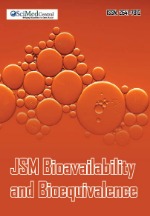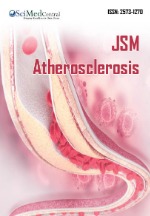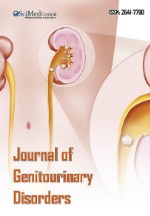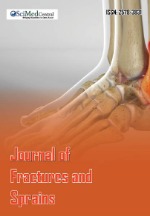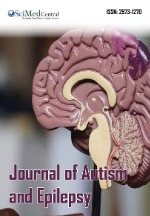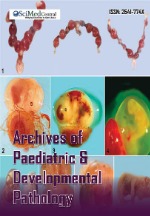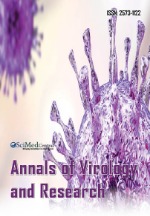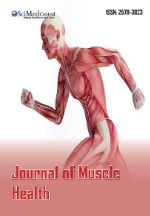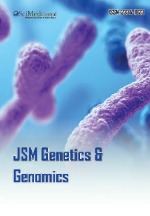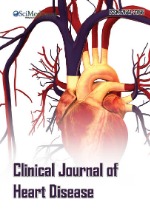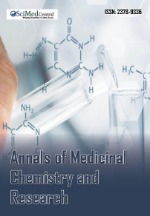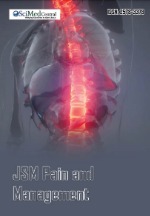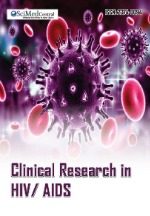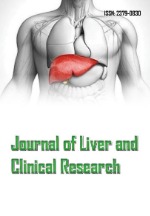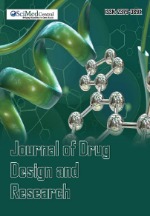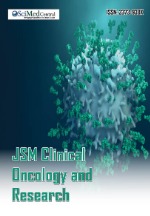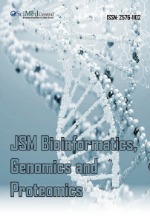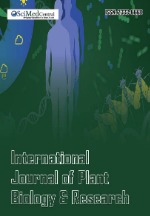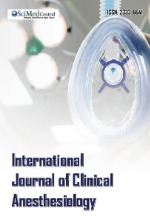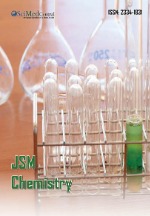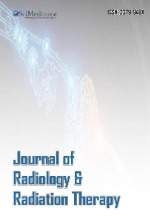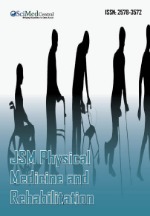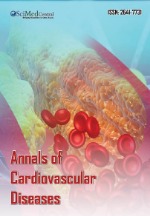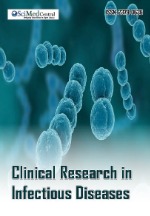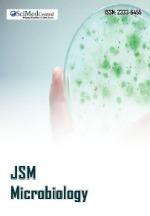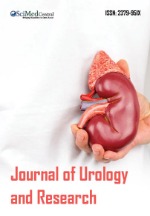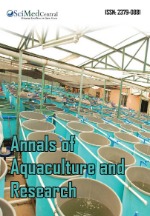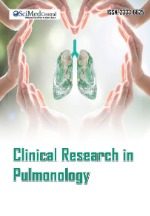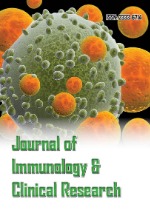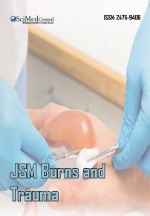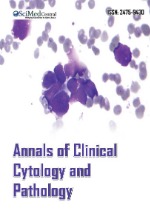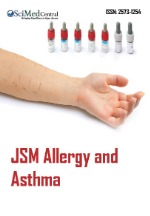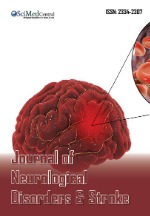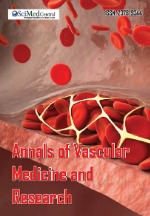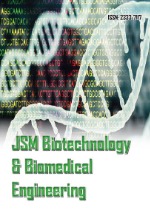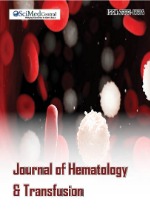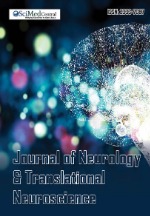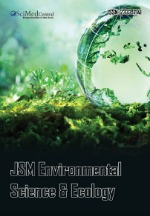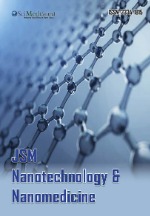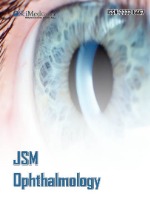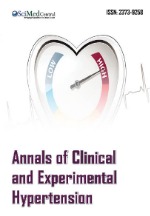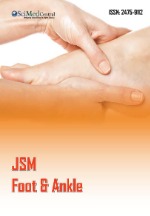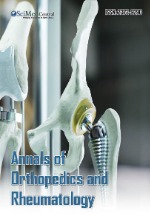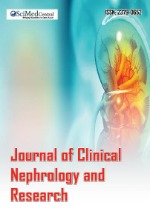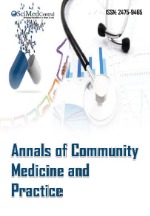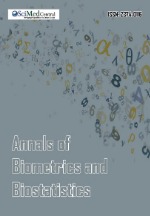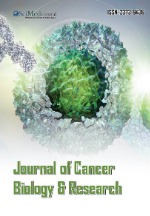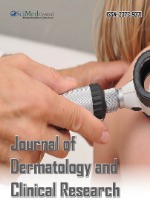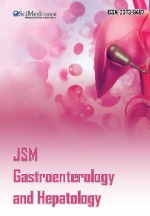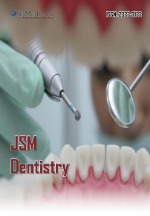Erythema Elevatum Diutinum in a Patient with Rheumatoid Arthritis: A Rare Bullous Variant Clinical Case Report
- 1. Dermatology Resident, Eugenio Espejo Specialties Hospital, Quito, Ecuador
- 2. Dermatologist, Eugenio Espejo Specialties Hospital, Quito, Ecuador
Abstract
Erythema Elevatum Diutinum (EED) is a rare chronic form of leukocytoclastic vasculitis, typically presenting with persistent erythematous to violaceous papules, nodules, and plaques localized on the extensor surfaces of the extremities. The bullous variant of EED is exceptionally uncommon, characterized by the formation of tense bullae or vesicles atop existing lesions, which may ulcerate and become secondarily infected. The patient experienced significant clinical improvement of the lesions following therapy. This case underscores the importance of recognizing atypical presentations of EED, especially in patients with underlying autoimmune disorders, and highlights the effectiveness of dapsone in managing refractory cases.
KEYWORDS
- Erythema elevatum diutinum
- Bullous variant
- Rheumatoid arthritis
- Leukocytoclastic vasculitis
- Dapsone
CITATION
López L, Félix C, Aguilar Y, Santofimio MV (2024) Erythema Elevatum Diutinum in a Patient with Rheumatoid Arthritis: A Rare Bullous Variant Clinical Case Report. JSM Clin Case Rep 12(4): 1246.
INTRODUCTION
Erythema Elevatum Diutinum (EED) is an uncommon chronic variant of chronic neutrophilic vasculitis. Although EED is a rare dermatological condition, its association with systemic diseases, particularly autoimmune disorders [1].
The case of a 55-year-old female patient with a history of RA, who developed EED exclusively on her lower limbs, represents a particularly rare and noteworthy clinical presentation. Typically, EED affects both upper and lower extremities; however, unilateral or isolated lower limb involvement [2], as observed in this patient, is exceedingly uncommon and warrants detailed examination. Epidemiologically, the incidence of EED remains low, with limited data available on its prevalence and association with RA. The rarity of the bullous variant, especially when confined to the lower extremities, emphasizes the need for comprehensive case reporting to enhance the collective medical community’s understanding of its pathophysiology and optimal management strategies.
CASE PRESENTATION
A 55-year-old female patient with a history of rheumatoid arthritis, treated with methotrexate, hydroxychloroquine, and deflazacort, presents with a poor response to treatment. Four years ago, she developed dermal lesions on the lower extremities, which appeared without apparent cause and were accompanied by intense pruritus. These lesions were treated with topical corticosteroids; however, they persisted and did not show improvement. Over time, their extent increased, occupying approximately 80% of the leg surface.
On physical examination, plaques composed of erythematous- violaceous papules and nodules arranged in a pseudo-annular pattern and with symmetrical distribution were observed. Some lesions exhibited excoriations, in addition to scattered blisters, some of which were denuded (Figures 1-3).
Figure 1: Symmetrically distributed erythematous-violaceous plaques and nodules arranged in a pseudo-annular pattern, affecting 80% of the surface area of the
Figure 2: Excoriated nodules exhibiting erythematous to violaceous discoloration.
Figure 3: Erythematous to violaceous plaques with a crusted appearance and scattered denuded blisters.
The oral and genital mucosae were unaffected.
The latest laboratory tests, including complete blood count, renal and hepatic function, and serologies for hepatitis A, B, and C viruses, as well as for Human Immunodeficiency Virus (HIV), were negative. Inflammatory markers, such as Erythrocyte Sedimentation Rate (ESR), Rheumatoid Factor (RF), and C-Reactive Protein (CRP), were highly elevated.
Due to the persistence of the lesions, a skin biopsy was performed, whose histopathological study revealed the formation of subepidermal blisters with an abundant superficial and deep perivascular dermal inflammatory infiltrate. This nodular infiltrate was predominantly composed of neutrophils and some eosinophils, with reactive capillaries and several foci of leukocytoclastic vasculitis and fibrinoid necrosis (Figures 4A-C),
Figure 4 A: The epidermis is slightly flattened and orthokeratotic, with a subepidermal blister and a dense nodular inflammatory infiltrate. B: A subepidermal blister predominantly composed of neutrophils. C: Leukocytoclastic vasculitis with fibrinoid necrosis of the vessel walls, accompanied by scattered eosinophils and histiocytes.
compatible with erythema elevatum diutinum.
DISCUSSION
Erythema Elevatum Diutinum (EED) is a rare type of chronic neutrophilic vasculitis characterized by the persistent presence of erythematous to violaceous papules, nodules, and plaques, predominantly localized to the extensor surfaces of the extremities, such as the hands, elbows, knees, and feet [3]. First described by Hutchinson in 1894, EED is considered a distinct clinical entity due to its unique presentation and chronic course [4]. The lesions of EED typically evolve over weeks to months and may ulcerate or form crusts in advanced stages. Histopathologically, EED is marked by intense neutrophilic infiltrates, fibrinoid necrosis of vessel walls, and subsequent fibrosis, distinguishing it from other forms of vasculitis [5].
EED is frequently associated with a spectrum of systemic diseases, including Human Immunodeficiency Virus (HIV) infection, hematologic malignancies such as multiple myeloma and lymphoma, and autoimmune disorders like rheumatoid arthritis and systemic lupus erythematosus [4]. In the context of rheumatoid arthritis, the coexistence of EED may indicate an underlying dysregulation of the immune system, potentially exacerbated by immunosuppressive therapies commonly employed in managing rheumatoid arthritis [6]. Additionally, associations with infections, particularly streptococcal infections, have been documented, suggesting a possible role of chronic antigenic stimulation in the pathogenesis of EED [3].
The immunopathogenesis of EED remains incompletely understood, yet it is hypothesized to involve immune complex deposition within the vessel walls, leading to complement activation and recruitment of inflammatory cells, particularly neutrophils [5]. This process results in vessel wall damage and subsequent fibrosis. Moreover, alterations in cytokine profiles, including elevated levels of Interleukin-8 (IL-8) and Tumor Necrosis Factor-alpha (TNF-α), may contribute to the chronic inflammatory state observed in EED [7]. Cellular studies have highlighted the role of abnormal neutrophil function and impaired apoptosis in sustaining the inflammatory milieu, thereby promoting persistent vasculitis and tissue remodeling [2].
Erythema Elevatum Diutinum (EED) manifests in several clinical variants, each exhibiting distinct morphological and distributional characteristics.
1. Classic Erythema Elevatum Diutinum: This is the most prevalent form of EED, typically presenting as symmetrical, persistent erythematous to violaceous papules, nodules, and plaques primarily located on the extensor surfaces of the extremities, including the hands, elbows, knees, and feet [8]. Lesions may coalesce to form larger plaques and can ulcerate or develop crusts in advanced stages. Chronic inflammation often leads to fibrosis, resulting in indurated plaques.
2.Bullous Variant EED: A rare presentation, the bullous variant is characterized by the formation of tense bullae or vesicles atop existing erythematous-violaceous lesions [1]. These bullae may rupture, leading to ulceration and secondary infections. This variant is frequently associated with more severe disease and may indicate an underlying systemic condition or immunosuppression, as observed in patients with rheumatoid arthritis [9].
The differentiation between these variants relies heavily on clinical presentation combined with histopathological findings. For instance, the bullous variant may require more aggressive therapeutic interventions due to the risk of ulceration and secondary infections. Additionally, recognizing the association of specific EED variants with underlying systemic conditions, such as rheumatoid arthritis or immunosuppression, is essential for comprehensive patient management [9].
Current treatments focus on reducing inflammation and suppressing the immune response, with therapies ranging from topical corticosteroids and dapsone to more potent immunosuppressants in refractory cases [4]. Our patient was classified in Bullous Variant and we initiated dapsone therapy at a daily dose of 100 mg and was referred to rheumatology for optimized management of her underlying rheumatoid arthritis. Currently, her lesions have exhibited notable clinical improvement.
In addition to dapsone, several other therapeutic options have been utilized in the management of EED. Colchicine has been employed due to its ability to inhibit neutrophil chemotaxis and reduce inflammation, showing efficacy in reducing lesion severity and frequency [11]. Systemic corticosteroids are considered in severe or refractory cases, providing rapid anti-inflammatory effects, although their long-term use is often limited by potential adverse effects [12]. Immunosuppressive agents such as azathioprine and mycophenolate mofetil have demonstrated beneficial outcomes in patients who do not respond adequately to first-line therapies, helping to control chronic inflammation and prevent disease progression [13]. Additionally, biologic therapies targeting specific inflammatory pathways, including TNF-alpha inhibitors, have shown promise in managing EED, particularly in cases associated with underlying autoimmune disorders like rheumatoid arthritis [14]. These alternative treatment strategies offer valuable options for achieving disease control and improving patient outcomes in EED, especially in refractory or complex cases.
ACKNOWLEDGMENT
We are thankful to Dr. Rosa Pacheco, Department of Pathology, Eugenio Espejo Specialty Hospital for her help in providing histopathological correlation with the clinical diagnosis.
ETHICAL PERMISSION
The patient has given informed consent during his treatment for the publication of this article.
REFERENCES
- Martínez A, Rodríguez Díaz S, Gómez-Centeno N. Bullous variant of erythema elevatum diutinum: A rare presentation associated with rheumatoid arthritis. Dermatol Pract Concept. 2019; 9.
- Thompson KD, Zhang Y, Prasad N. Neutrophil dysfunction in erythema elevatum diutinum: A cellular perspective. Immunol Res. 2022; 70: 123-130.
- Gratz KW, Ageron AA, O’Shea AM. Erythema elevatum diutinum: A review of clinical and histopathologic features. Dermatol Ther. 2018; 31.
- Sharma P, Gupta S, Sharma V. Erythema elevatum diutinum: A rare cutaneous manifestation of rheumatoid arthritis. Indian Dermatol Online J. 2020; 11: 194-196.
- Kelley JL Smith EJ. Erythema elevatum diutinum: A clinicopathologic study of five cases. Am J Dermatopathol. 2019; 41: 300-305.
- Lee KS, Yoon JH, Kim HW. Association of erythema elevatum diutinum with rheumatoid arthritis: Case report and literature review. Ann Dermatol. 2021; 33: 89-92.
- Patel KD, Mouri R, Gratz KW. Pathogenesis of erythema elevatum diutinum: Insights from cytokine profiling. J Clin Immunol. 2019; 39: 568-575.
- Li CY, Lin H, Fang YH. Erythema elevatum diutinum: A comprehensive review of clinical manifestations, differential diagnosis, and treatment strategies. J Clin Aesthet Dermatol. 2020; 13: 24-30.
- Nguyen LT, Vu HT, Tran PT. Erythema elevatum diutinum in a patient with rheumatoid arthritis: A case report and review of the literature. BMC Dermatol. 2021; 21: 123.
- Silva MG, Ribeiro RC, Pereira AM. Papulosquamous variant of erythema elevatum diutinum: Clinical and histopathological aspects. Rev Bras Dermatol. 2018; 93: 802-805.
- Johnson L, Smith R. Advances in the treatment of erythema elevatum diutinum: A systematic review. J Dermatol Treat. 2019; 30: 432-438.
- Brown M, Davis H. Biologic therapies in dermatological vasculitis: Erythema elevatum diutinum. Dermatol Clin. 2020; 38: 443-450.
- Wilson K, Thompson R. Emerging treatments for erythema elevatum diutinum: Case series and literature review. J Am Acad Dermatol. 2021; 85.
- Lee S, Kim Y, Park J. TNF-alpha inhibitors as a therapeutic option in refractory erythema elevatum diutinum: A multicenter study. Br J Dermatol. 2018; 178: 575-578.






